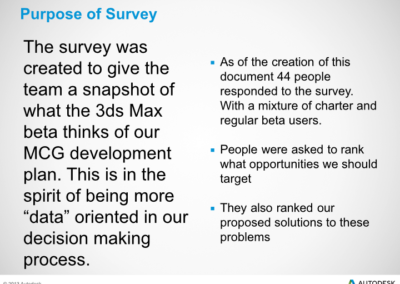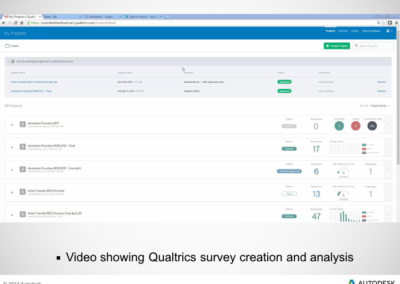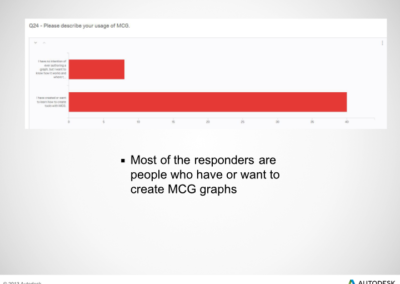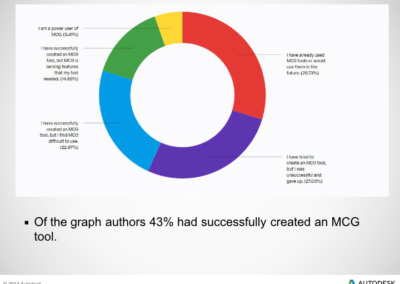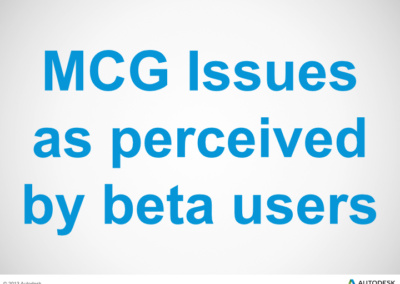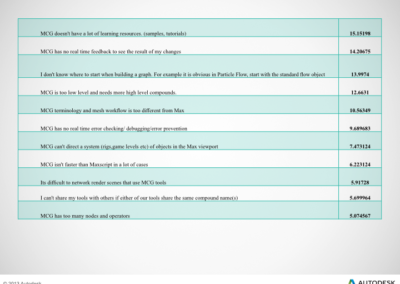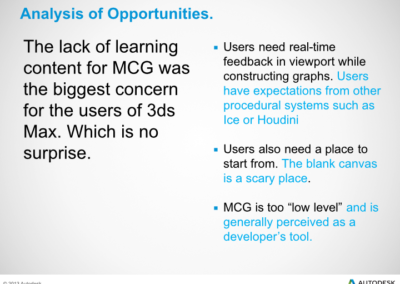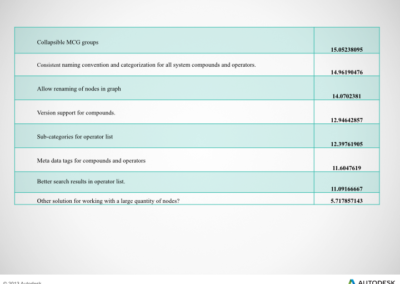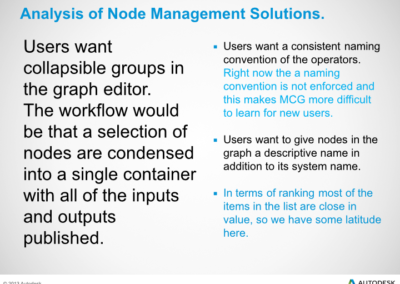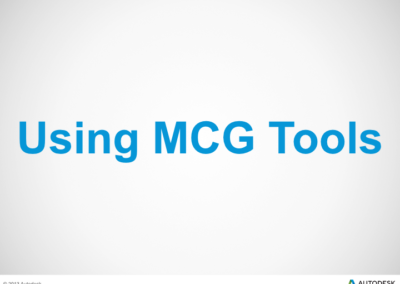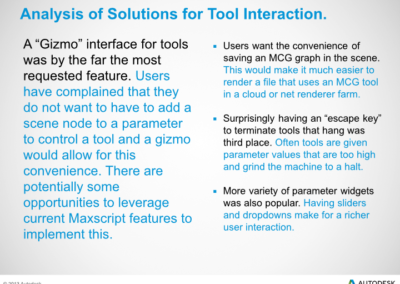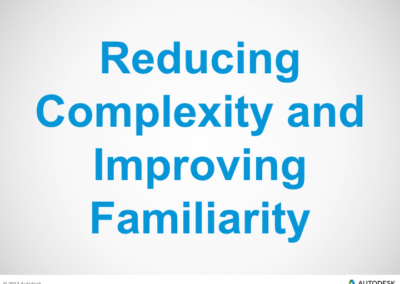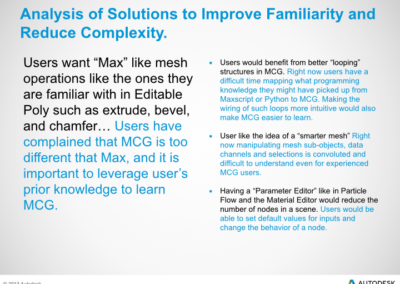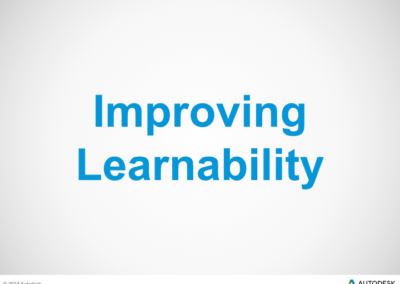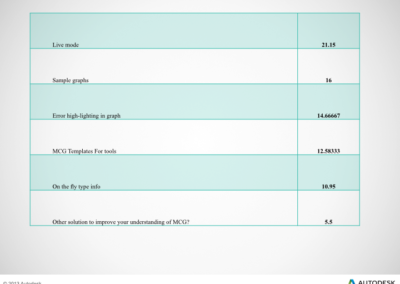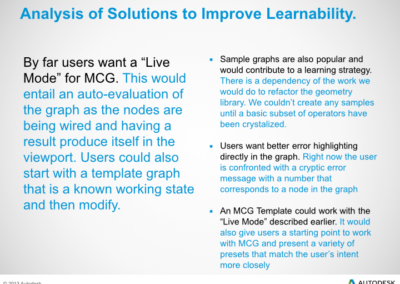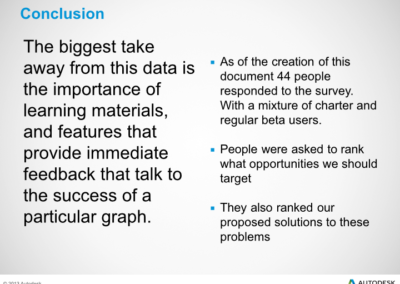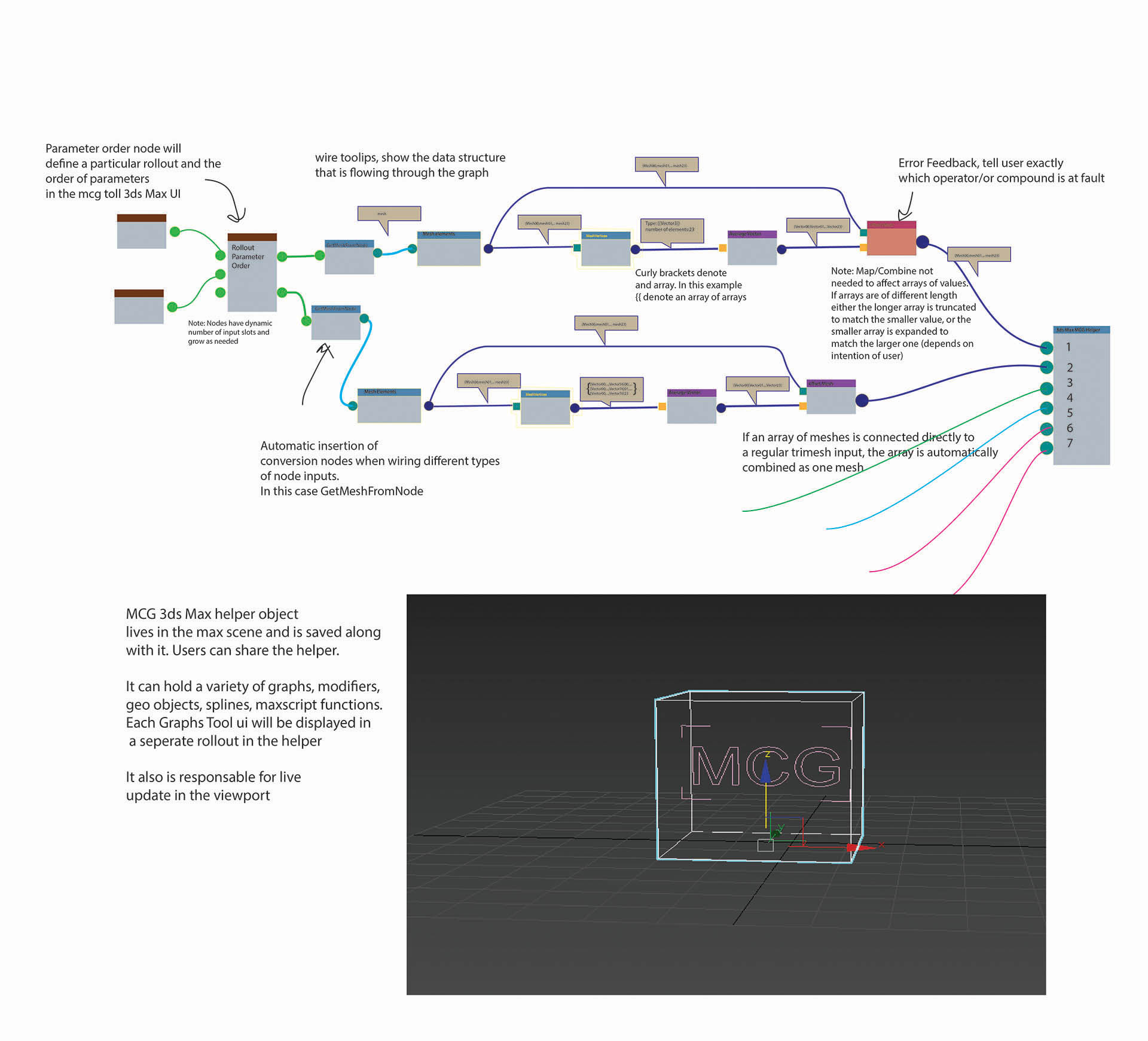Ethnographic User Research and Surveying
3ds Max (MCG) Usability
designer
Clint Lewis

Original Photos by flickr users See-ming Lee and Peter Alfred Hess
Introduction
In 3ds Max 2016 the product team delivered a new feature called MCG or the Max Creation Graph. This feature drew inspiration from other visual programming tools such as Softimage-ICE and Rhino-Grasshopper.
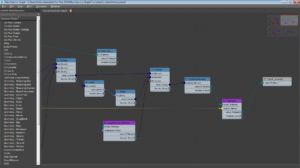
MCG Graph in 3ds Max 2016
For those unfamiliar with visual programming, blocks of code or application functionality are represented by nodes in a connected graph. The user strings these blocks together to create a computer program or new feature. It is conceptually similar to the programmer’s flow chart.
By providing the building blocks, the development team is freed from providing small features to the user community. In theory users would share their graphs with each other, thus enhancing the power of their application.
See below for some examples of MCG in action.
MCG allows users to create geometry and animation plugins for 3ds Max. Unfortunately MCG relied on programming concepts and spoke to a technical audience and did not build on the intuitive nature of the 3d artist. The fact that MCG was hard to learn for non technical 3d artists impeded its adoption by the large 3ds Max user base.
A major stumbling block for all users, even those who were familiar with programming concepts was the functional programming paradigm used in MCG. Functional nodes were connected to special square connectors in the graph.
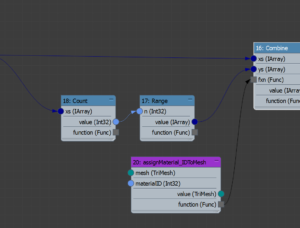
Functional Programming in MCG
In addition to being hard to understand, the functional aspect of the system broke the consistency of the UX in the graph. All of the sudden users would be confronted by nodes that had no input connections. In addition this concept was different from any other visual programming system they were familiar with either within or external from the main application.
To remedy this situation the product manager called for an initiative to make MCG more “artist friendly”.
Artist Friendly?
So what makes a tool artist friendly? Here are some rules of thumb I discovered that would make MCG more usable. These are the fruits of talking (and surveying) to users and noting where they dropped out.
- Give artists template content that illustrates key concepts that can be experimented with.
- There should be immediate feedback when experimenting as opposed to a compilation step plus instantiation to see the final result.
- Error messages should be clear and not use computer science jargon.
- Parts of the graph that are not working should be highlighted.
- There should be a well documented help section with lots of usage examples.
Customer Visit
I visited the motion graphics house in Toronto called “Big Studios” to provide a hands on training workshop regarding MCG. I directly observed the difficulty a typical 3d artist would face when learning the system.
Below is an embedded pdf with the learning plan I provided to the artists during my workshop.
Here are some observations from the training session
- The “function map combine model” is very difficult for artists to understand, “MCG is too low level developer centric”.
- Working with arrays is hard to visualize for an artist (need direct visual feedback in a view a la ICE)
- Some of them tried to install sample pack 1, but none of the tools worked, so they were discouraged.
- They don’t have a lot of time to learn MCG as they need to have fast turnarounds.
- They wanted to get realtime feedback in the graph that shows the flow of data through the graph.
- They want MCG to work like Particle Flow in that they are always starting from a state that “just works”.
- They were very grateful we took the time to help them.
- Online discoverability of the MCG blog is poor (people aren’t finding Martin’s tutorials).
Given these observations from a single customer site, I needed a larger sample of user opinions to base a course of action.
Here are the results of a survey I did to poll the expectations of 3ds Max users regarding MCG procedural workflows and “Artist Friendliness”.
When designing a survey there are some factors to consider:
- Avoid leading questions.
- Cross reference the type of user being polled (beginner, intermediate, or advanced skill)
- Do not make the survey too long or the user will drop out before completion.
Design Proposal
Below is a design mock up I created to alleviate the issues that made MCG “non-artist friendly”. These insights are directly based on the user observations, and survey results.
Key changes to the MCG graph Interface:
- Hide the functional nature of the graph.
- Tool-tips to describe the data-flow in the graph.
- Useful tool-tips for every node.
- Real-time evaluation of graph with results in 3d view.
- Error highlighting of problematic nodes.
- Clear evaluation order of graph branches.
Conclusion
When designing a complex system it is important that it meets the expectations of users. It is often the instinct to “just get it out the door” and worry about usability later, but this is a costly mistake that few companies can afford in this day and age.
New features should also try to conform to established patterns present in popular applications and to patterns already present in the application.

